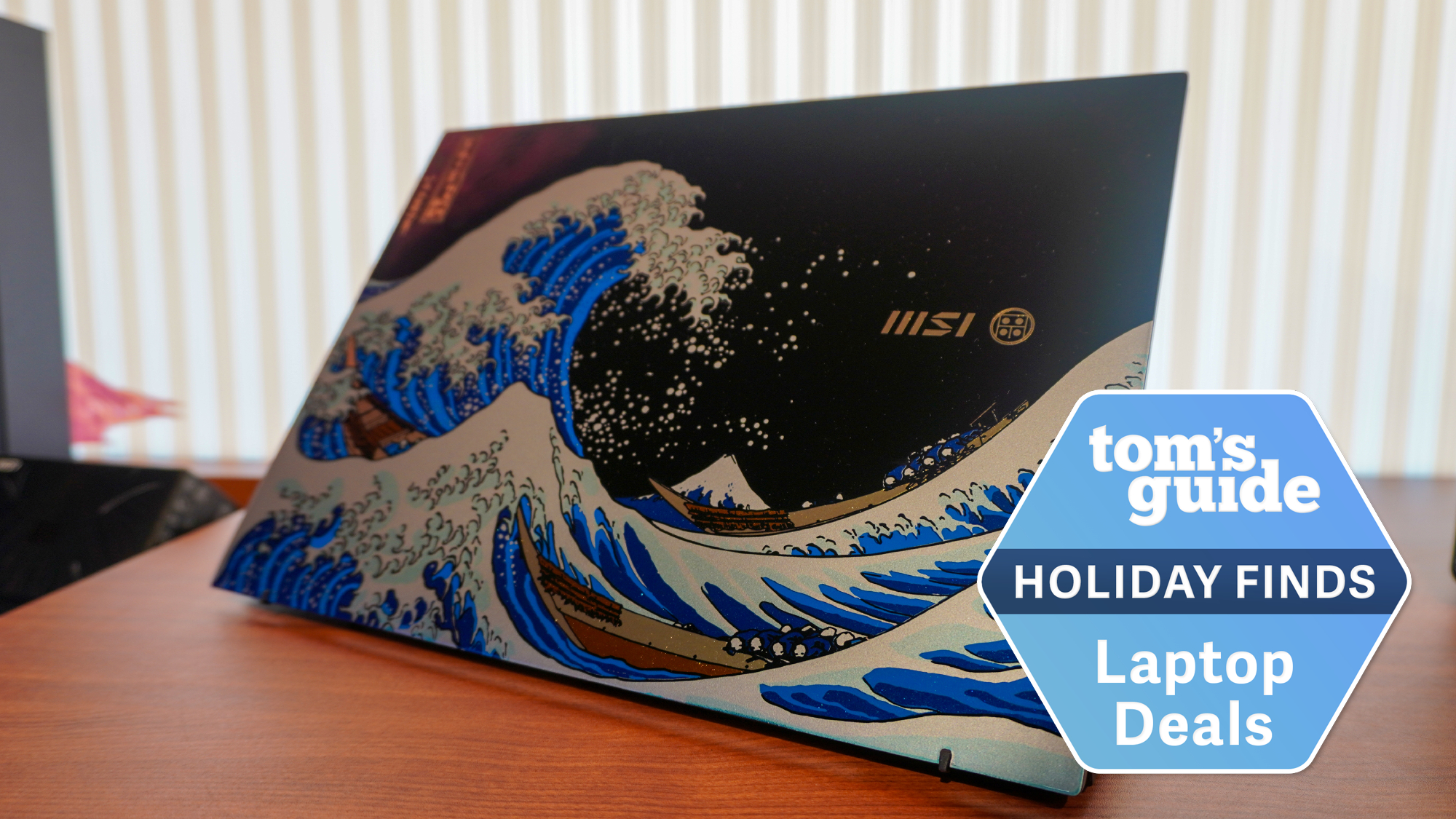Tom's Guide Verdict
If you want a big-screen phone, get the Galaxy S10+ instead of the Xperia 1, despite the gorgeous display on Sony's latest flagship.
Pros
- +
Gorgeous cinematic display
- +
Blazing fast performance
Cons
- -
Poor battery life
- -
Extremely tall design
- -
Sluggish cameras
Why you can trust Tom's Guide
Sony is always marching to the beat of its own drum. When other companies were exploring giant edge-to-edge displays, Sony went smaller with last year's adorable XZ2 Compact. Now that bezels are a thing of the past, other device makers are turning to foldable phones to lure buyers. Sony isn't playing that game.

Instead, the company is going after film buffs with a trio of phones that promise cinematic experiences thanks to ultrawide, 21:9 displays.
The midrange Xperia 10 ($349) and 10 Plus ($429), released earlier this year, underwhelmed us with terrible performance and finicky cameras. At $950, the Xperia 1 costs more than double the price of its siblings, and places Sony's latest in the middle of an extremely competitive fight, where it's going to have to battle everything from the Galaxy S10+ to the iPhone XS.
It's a fight Sony will have a hard time winning — the Xperia 1 is a little too weird for most people.
Xperia 1 price and availability
Sony's $950 Xperia 1 is available to buy now through Amazon, Best Buy, B&H Photo and Focus Camera.
Like the Xperia 10 and 10 Plus, Sony's new flagship is compatible with GSM networks and certified to work on Verizon. Sprint customers are out of luck.
In the U.S., the Xperia 1 comes in black and purple.
Get instant access to breaking news, the hottest reviews, great deals and helpful tips.
Xperia 1 specs
| Price | $949.99 |
| Display (Resolution) | 6.5 inches (1644 x 3840) |
| OS | Android 9 Pie |
| Rear Camera(s) | 12-MP wide-angle (f/1.6), 12-MP standard (f/2.4), 12-MP (f/2.4) with 2x optical zoom |
| Front Camera | 8-MP (f/2.0) |
| CPU | Qualcomm Snapdragon 855 |
| RAM | 6GB |
| Storage | 128GB |
| microSD | Up to 512MB |
| Headphone Jack | No |
| Battery | 3,330 mAh |
| Battery Life (Hrs:Mins) | 7:21 |
| Colors | Black, Purple |
| Size | 6.5 x 2.8 x 0.3 inches |
| Weight | 6.28 ounces |
Design: A towering giant
There's no getting around it: this phone is strangely shaped. It looks more like my TV remote than it does a smartphone. Samsung’s Galaxy S10+ has a similarly ginormous display, just a hair under the Xperia 1 at 6.4 inches, and measures 6.2 inches long. I thought that was huge, until I tried sticking the Xperia 1 in my jeans pocket. I couldn't sit down without this thing stabbing me in the leg.
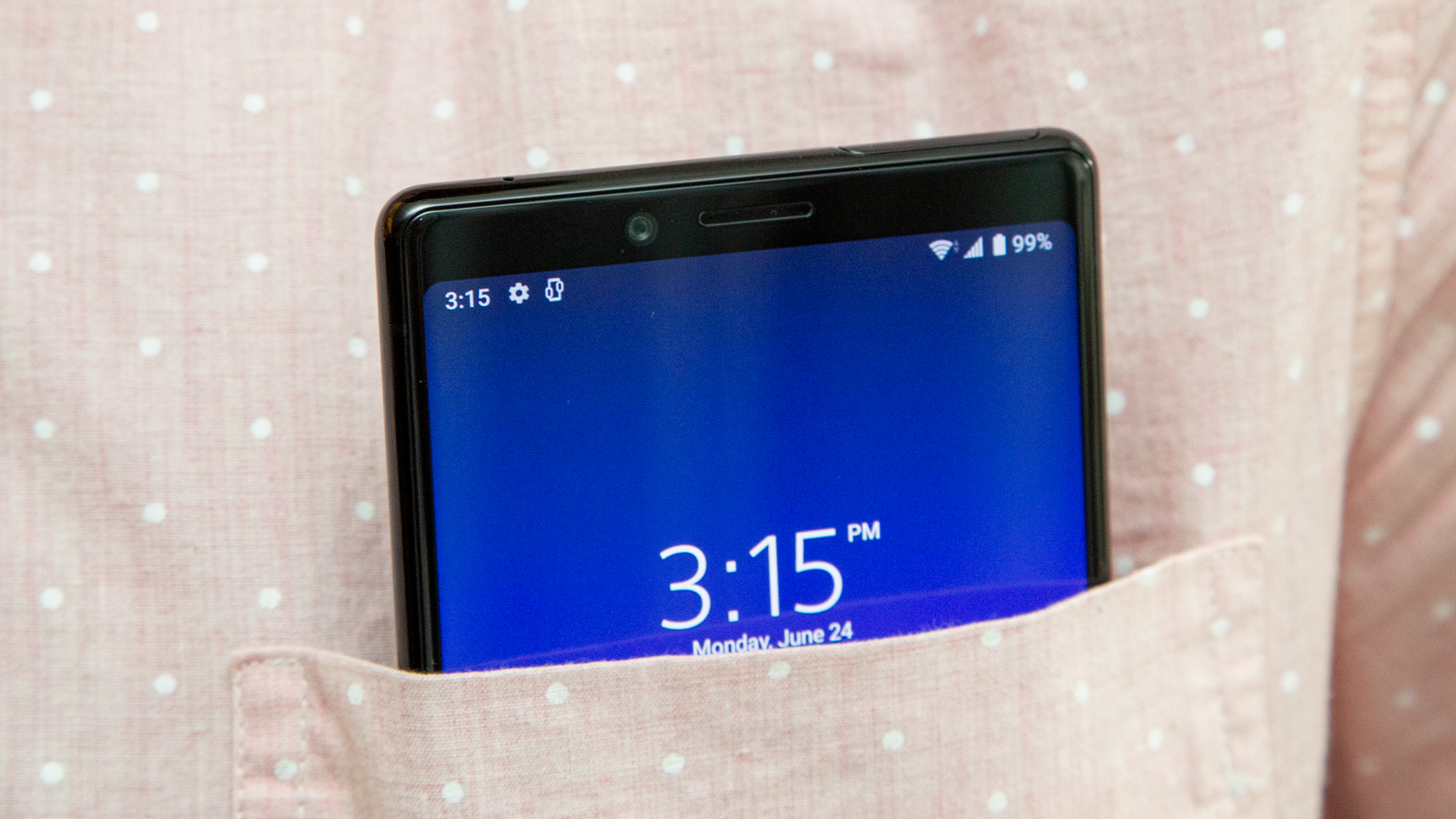
The Xperia 1 doesn't necessarily look bad — just a little bizarre. Size-wise, the Xperia 1 stands out of a smartphone lineup, but the black model I tested was run-of-the-mill regarding color. It is definitely sleek, if not unique. The phone's glossy back was also mostly resistant to fingerprints, which is a relief in this day and age. The device is slippery, though — a problem that plagues most smartphones.
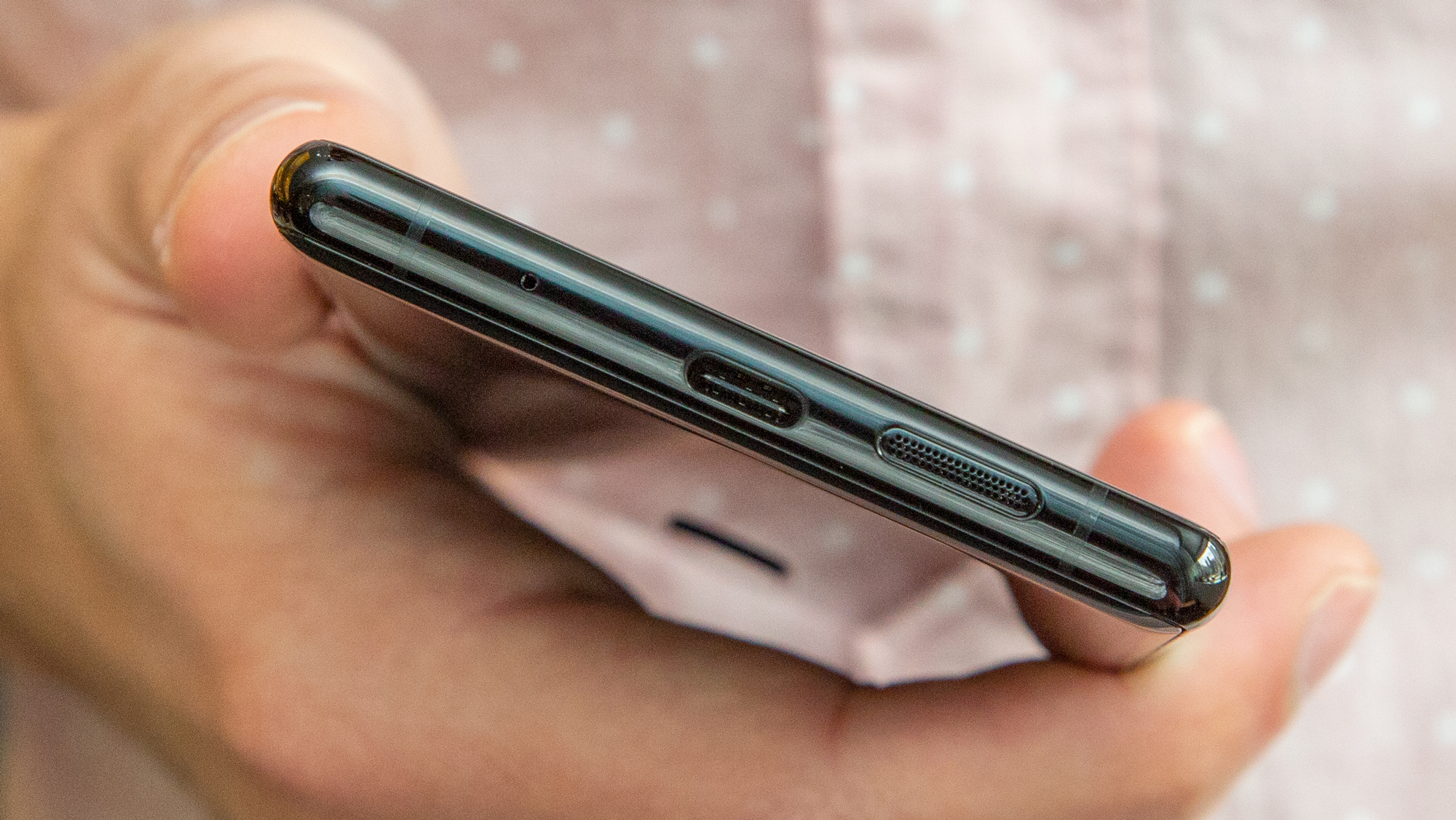
For a phone that's all about doing big-screen entertainment justice on a smaller screen, I'm puzzled that Sony didn't include a headphone jack in the Xperia 1. I normally don't think about it, because I own a couple pairs of Bluetooth earbuds and headphones, but this would be the phone that would lend itself to a 3.5mm audio jack.
Then there's the button placement — Sony put everything you need to operate the device on its right side. The volume rocker, fingerprint sensor, power button and camera launcher line the right of the phone's frame, and I often found myself inadvertently pressing something just by picking the phone up from a table or plucking it out of my bag.
Display: A cinematic marvel
With the Xperia 1, Sony claims to offer the world's first 4K HDR OLED display. And it's gorgeous.
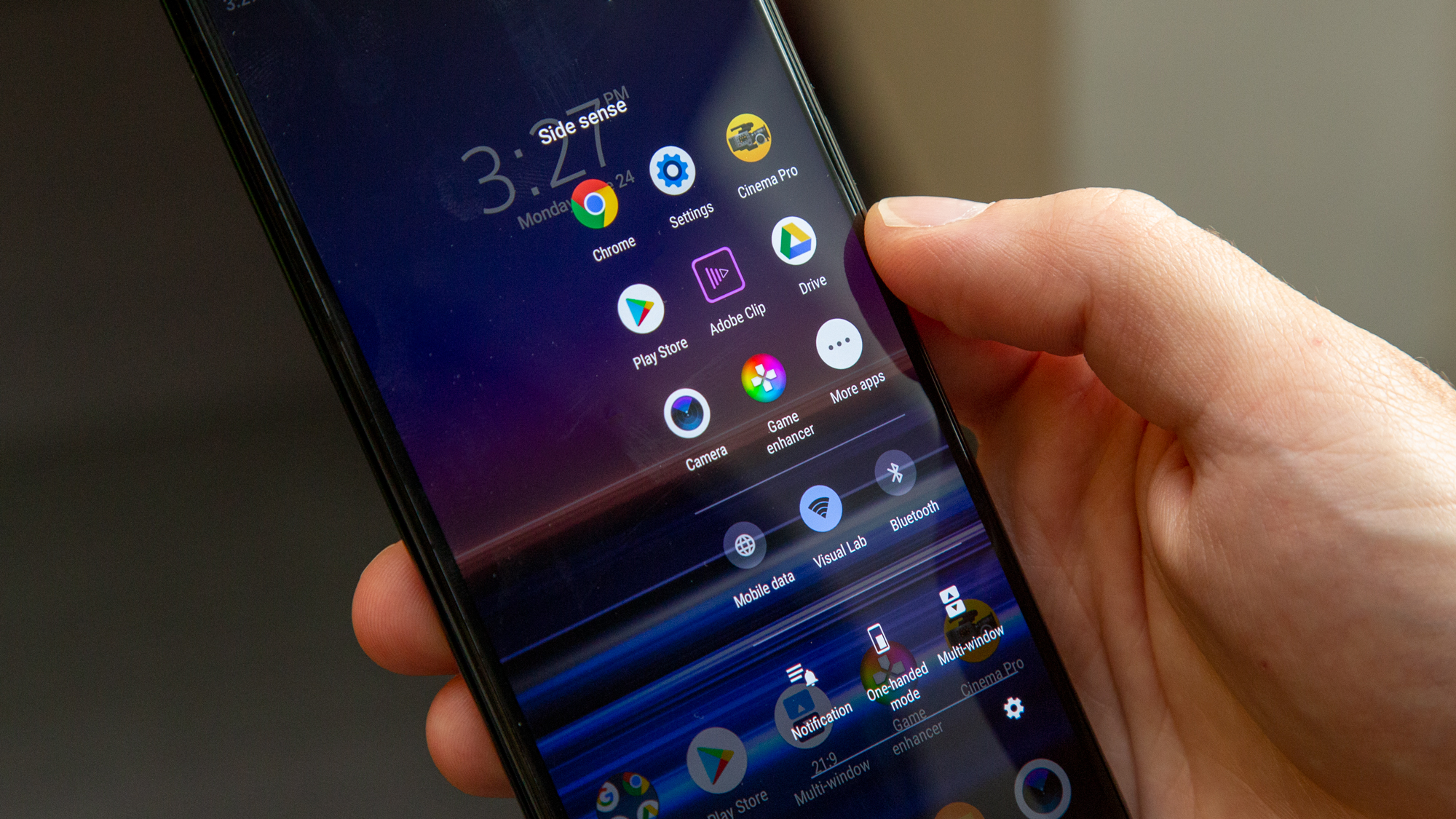
The 6.5-inch display's 21:9 aspect ratio makes this phone feel like you're holding a movie theater in the palm of your hand. I opened Netflix and decided to test the CinemaWide screen with Spider-Man: Into the Spider-Verse to see how the stunningly saturated animation would play on a smartphone panel.
Sony says it automatically enables a color-enhanced Creator mode when you open Netflix, and whatever magic is happening behind the scenes creates a movie-watching experience unlike any other I've seen on a smartphone. I was blown away.
The OLED panel's accurate reproduction of hues is impressive. As I watched Spider-Man, the comic-book yellow speech bubbles popped around Miles Morales as he strolled through his high school's Tiffany-blue hallways. The Xperia 1's panel notched a Delta-E score of 0.16 for color accuracy. To compare, Samsung's Galaxy S10+ notched a 0.29 and the iPhone XS Max hit 0.22 on the Delta-E rating. (Numbers closer to zero are better.)
The Xperia 1 also covers 143.4% of the sRGB color gamut, more than its slightly pricier (and slightly smaller) rivals, the Galaxy S10+ (136.5%) and the iPhone XS Max (123%).
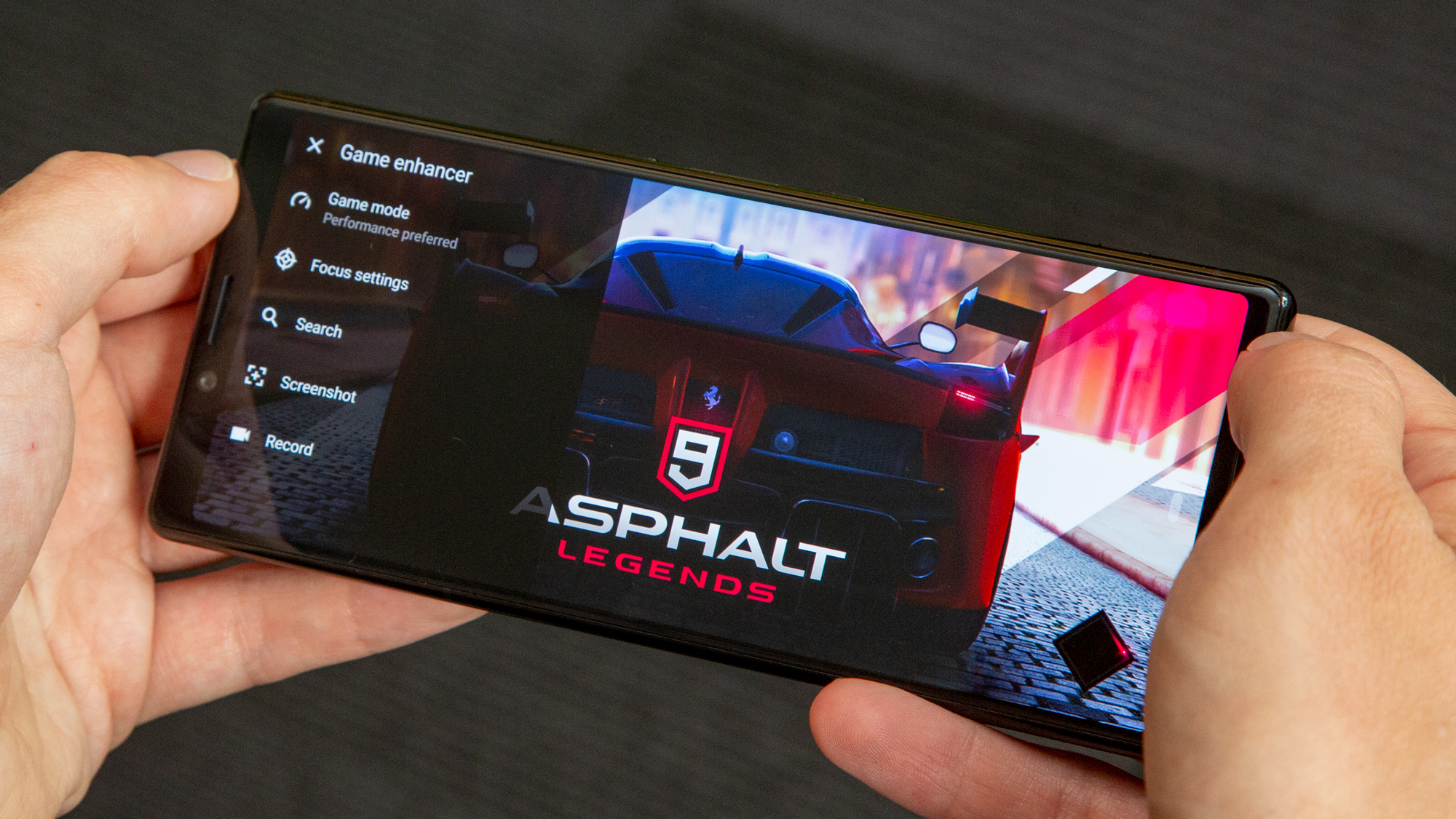
The 21:9 aspect ratio makes the Xperia 1 feel like you’re holding a movie theater in the palm of your hand.
Gaming is also a delight. I played my favorite street-racing game, Asphalt 9, and gripped the extra-long Xperia 1 like it was a steering wheel as I sped through the streets of European capitals. As I kicked it into Nitro gear, Parisian architecture flashed by, and I never appreciated the Xperia 1's high-res ultrawide screen more.
The screen is less awesome when watching YouTube videos and reading articles. As I watched Beyonce's "Spirit" video for The Lion King, I stretched the video to 21:9 and the glorious blur of color and dancing became fuzzy. But without stretching the video, giant black bands appear on both sides of the action. It's distracting.
MORE: Apple's iPhone XS Max Has the Best Smartphone Display Ever
I also expected reading to be a pleasant experience on the Xperia 1 because its ultralong display can fit in more text, but I've become accustomed to reading on squares. I find that physical books, Kindles and more normal-shaped smartphones are more comfortable for taking in blocks of text than this elongated screen.
Your mileage may vary. The Xperia's display is easy to see in bright sunlight, reaching 555 nits in our lab when hit with a light meter. That's not as bright as the Galaxy S10+ (625 nits) or the iPhone XS Max (606 nits), but it wasn't noticeable to my eye.
Cameras: Four lenses, countless issues
Sony took the camera technology from its Alpha camera lineup and baked it into the Xperia 1, so I was excited to test out its triple-lens array. With a new BIONZ X image processor and three 12-megapixel cameras — a standard, wide-angle and telephoto lens with 2x optical zoom — I expected high-quality photos.
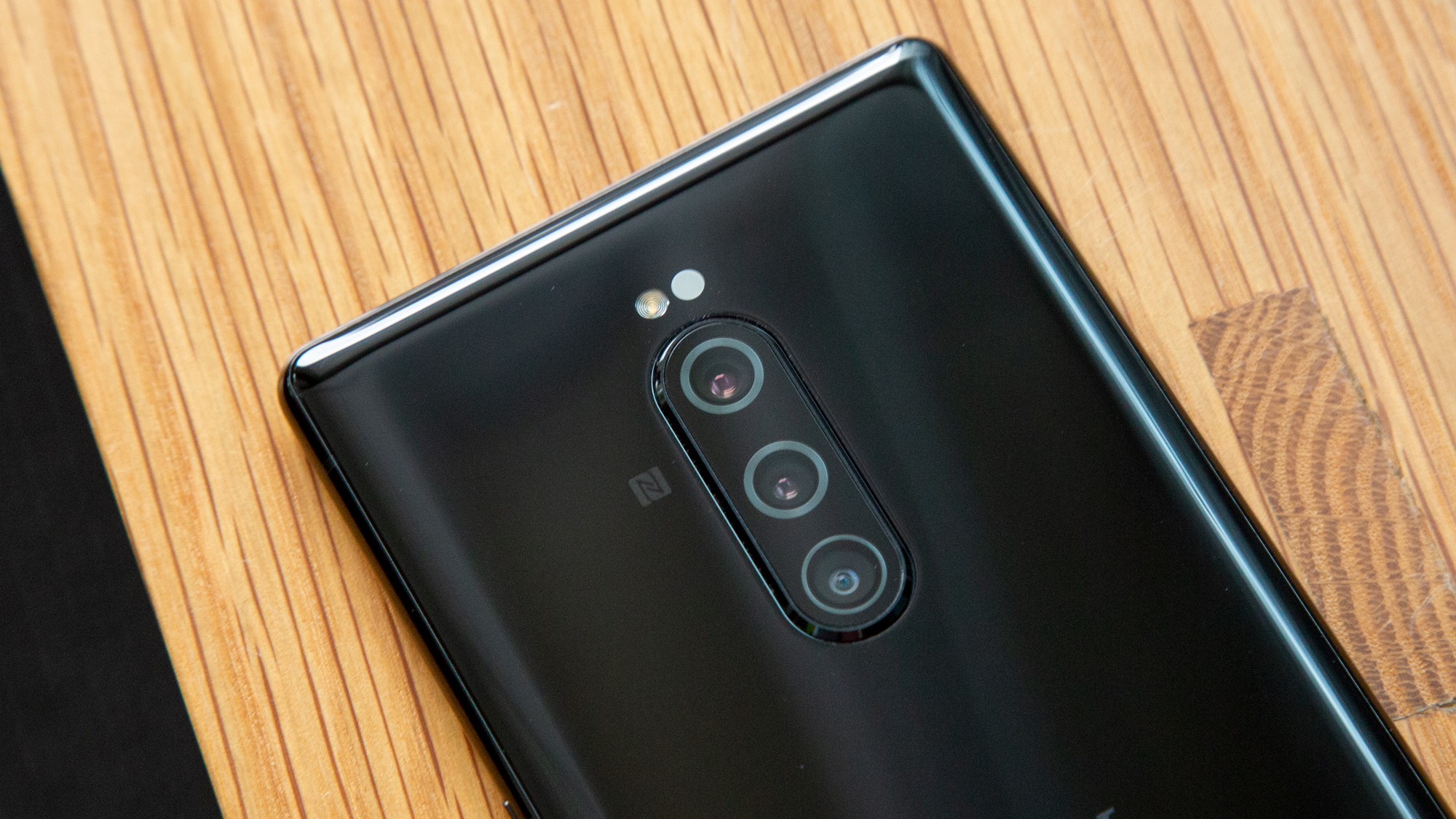
And I got them — some of the time. For instance, in a photo of the Bellagio fountains in Las Vegas taken from across the Strip, the Xperia's ultrawide aspect ratio offers more scenery in the frame than a more traditional size phone would. The Xperia also handled the streetlights better than the Galaxy S10+, which has a triple-lens camera system of its own (and in this case did not have Bright Night mode activated).
But in other situations, like a backlit selfie and a photo of almond butter toast in a dimly lit cafe, the Xperia struggled to optimize the lighting.
The Galaxy S10+ selfie looks more natural; the Xperia's image appears hazy and the sunlight on my shoulders is blown out.
The Xperia couldn't handle the low light in the coffee shop, highlighting the plate instead of the strawberry jam atop the almond butter. The Galaxy S10+ calibrated the light perfectly.
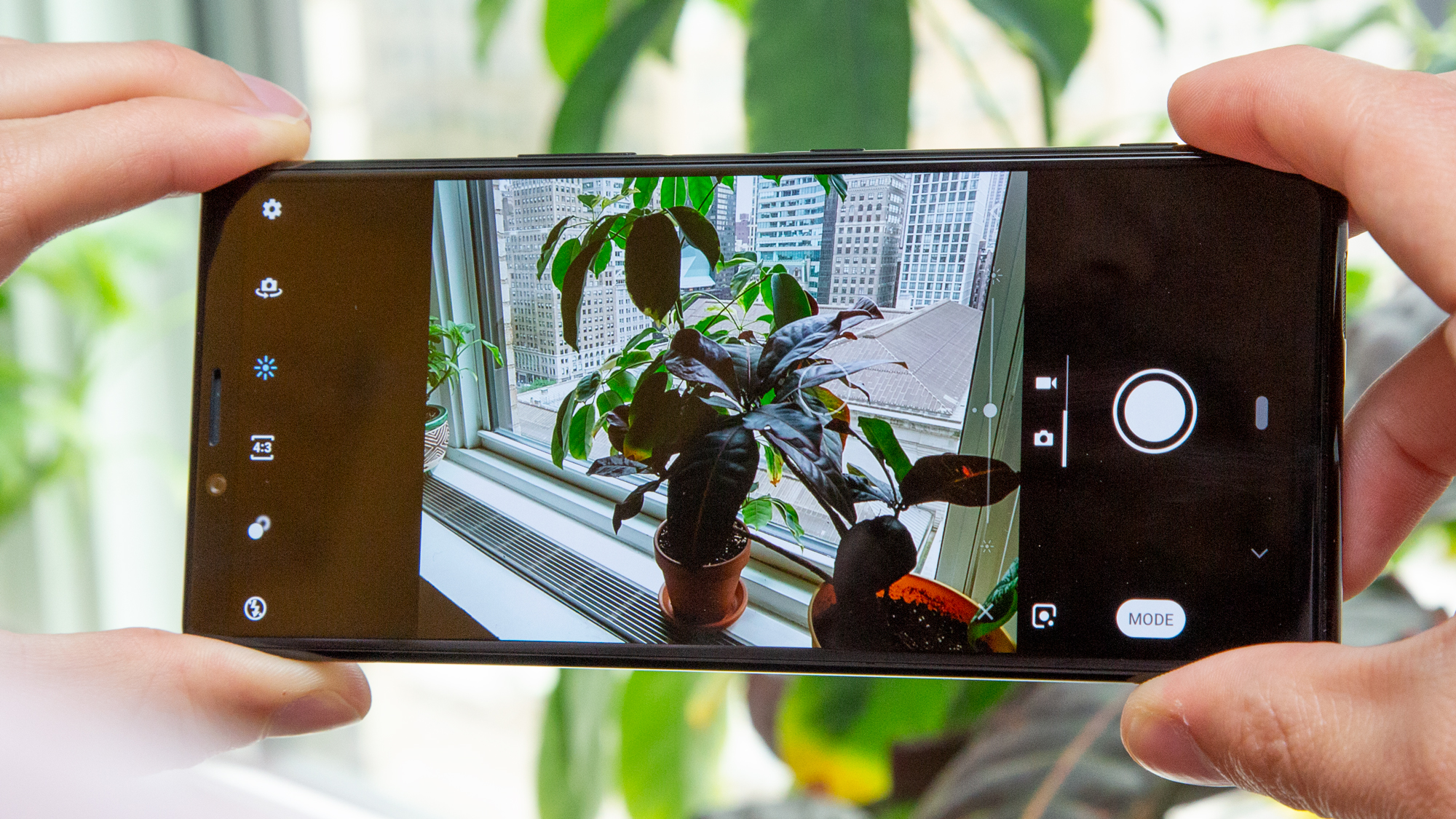
Lighting issues aside, I just didn't love the experience of using the camera. The Xperia 1 takes longer than most smartphones to capture a photo after tapping the shutter. The process of toggling between lenses isn't exactly intuitive, either. Unlike the Galaxy S10+, which lines up its lens options in preview so you know which one you're using, the Xperia makes you guess as you tap through the choices: 1X, 2X or W? (Those are standard, telephoto and wide-angle, but good luck figuring that out on first glance.)
MORE: Which Camera Phone Has the Best Zoom?
Nearly every flagship phone will soon have a triple-lens camera, so Sony is at the forefront there. But Samsung still has the trio to beat.
Performance: Up there with the best
With Qualcomm’s Snapdragon 855 chip and 6GB of RAM, the Xperia 1 turns in a performance you'd expect from a flagship Android phone in 2019 — and then some.
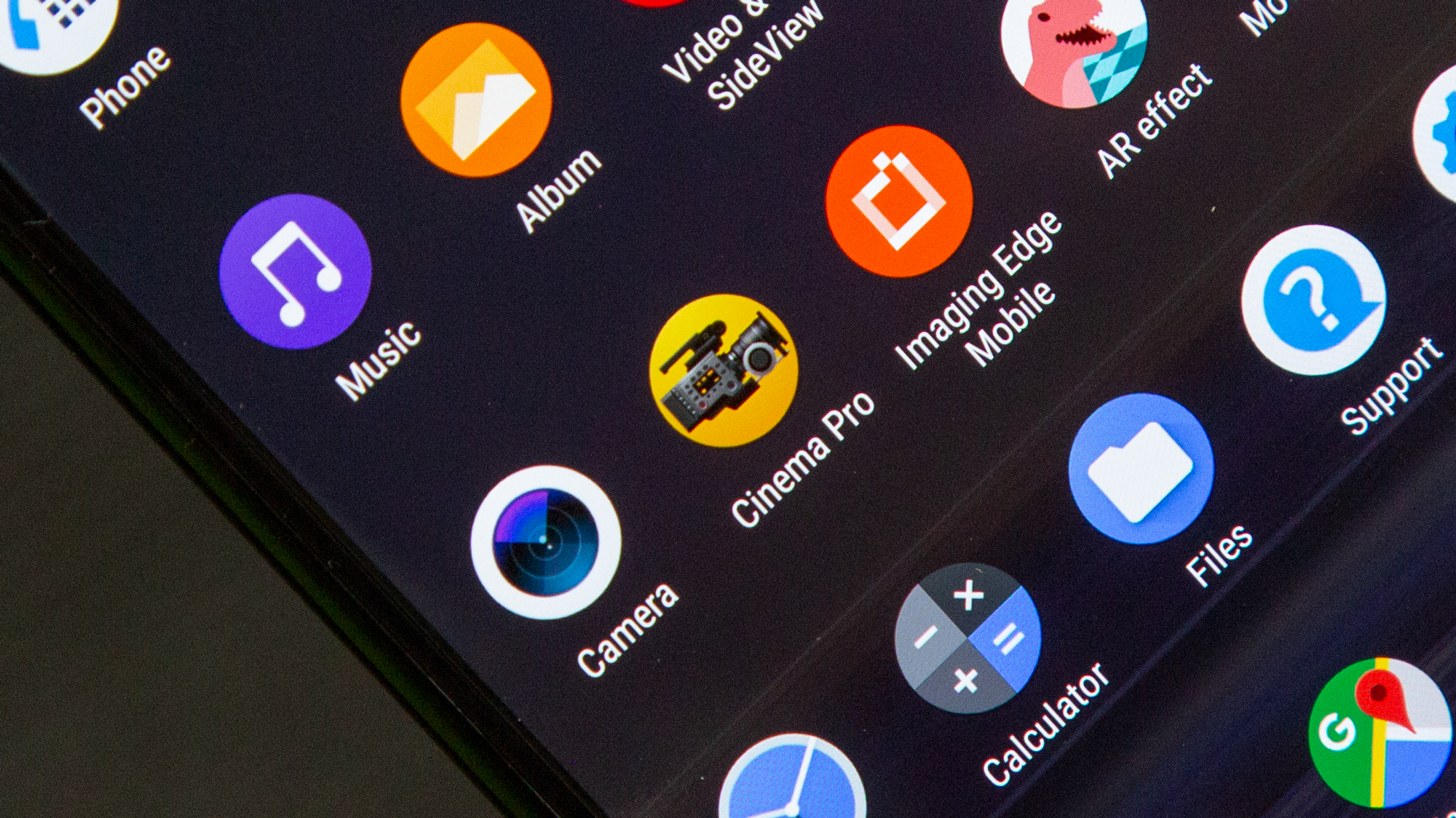
The Xperia 1 notched a 11,147 on Geekbench 4's test of overall system performance, nipping at the heels of the OnePlus 7 Pro (11,227) and the iPhone XS (11,420). The Galaxy S10+ (10,732) is no slouch, but the Xperia 1 edges out Samsung's flagship.
In everyday life, this just means that Sony's flagship can easily handle all of your usual activities: streaming movies on Netflix, cruising the internet and playing (accidentally) way too many races in Asphalt 9.
MORE: Best Smartphones on the Market Now
The Xperia also pulled ahead of the S10+ in graphics performance, scoring 5,729 on 3DMark’s Sling Shot Extreme Open GL ES 3.1 test. Samsung's supersize flagship hit 5,648. The Xperia 1 also sailed past the iPhone XS, which scored 4,339.
Battery Life: Underwhelming
With all the movies you’re going to watch on the Xperia 1, it's disappointing that Sony didn't stuff a larger battery into its extra-large frame. The flagship's 3,330 mAh pack lasted just 9 hours and 21 minutes on the Tom's Guide Battery Test, which involves continuous web-surfing over T-Mobile’s LTE network with the display set to 150 nits.
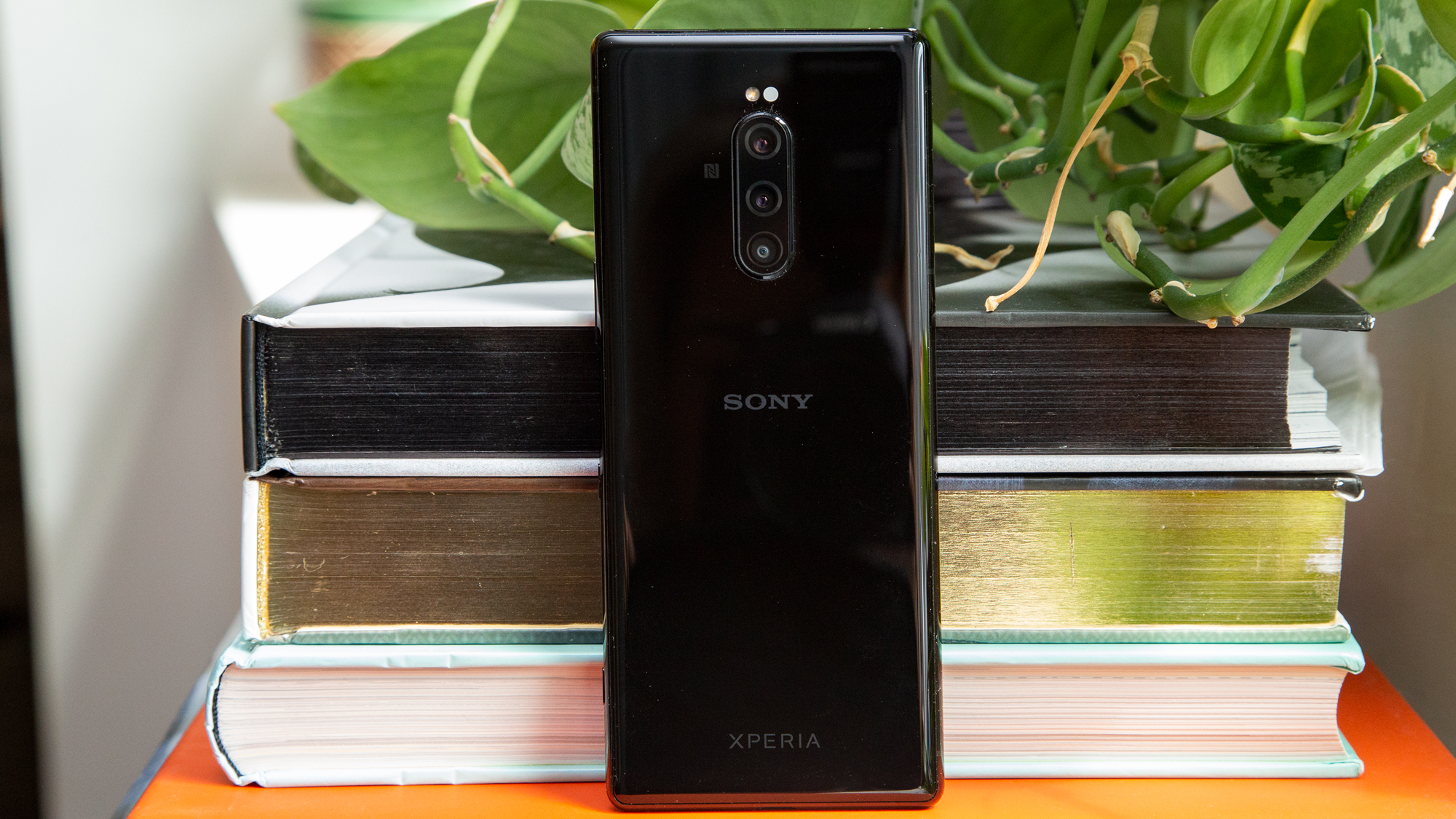
With all the movies you're going to watch on the Xperia 1, it's disappointing that Sony didn't stuff a larger battery into the phone's extra-large frame.
That's slightly better than Sony's other 2019 handsets, the Xperia 10 (8:05) and 10 Plus (8:46). Those devices have smaller batteries, so it makes sense that they don't last as long as the beefier Xperia 1.
But buyers prioritize battery life, especially in an expensive phone designed to consume (and create) videos. The average smartphone lasts nearly 10 hours on our test, and flagships such as the Galaxy S10+ (12:35) and iPhone XS Max (10:38) easily surpass the Xperia 1.
MORE: Best Phone Battery Life - Longest Lasting Smartphone Batteries
The good news is that the Xperia doesn't take long to charge, juicing up to 40 percent in 30 minutes. That's not super-impressive compared with the likes of the OnePlus 7 Pro, which uses Warp Charge technology to go from 0 to 60% in a half hour, but it's not terrible.
Bottom Line
The Xperia 1 has a near-perfect display, but its size makes the phone feel (and look) bizarre. If the company ditched the thick bezels around the camera and chin of the device, it could maintain that super-wide aspect ratio while looking more modern.
But when other smartphone makers zig, Sony zags. I appreciate the effort; I just wish the company would deliver on its promise. Cutting-edge camera tech? The photos need to be perfect. Crazy amazing screen? Size it appropriately for a human hand to hold. And if you want people watching Netflix on the regular, the phone's battery life has to be much longer.
I wanted to like the Xperia 1. But it's just too expensive for what you get. If you're going to spend $1,000, the Galaxy S10+ is still the Android flagship to beat.
Caitlin is a Senior editor for Gizmodo. She has also worked on Tom's Guide, Macworld, PCWorld and the Las Vegas Review-Journal. When she's not testing out the latest devices, you can find her running around the streets of Los Angeles, putting in morning miles or searching for the best tacos.

